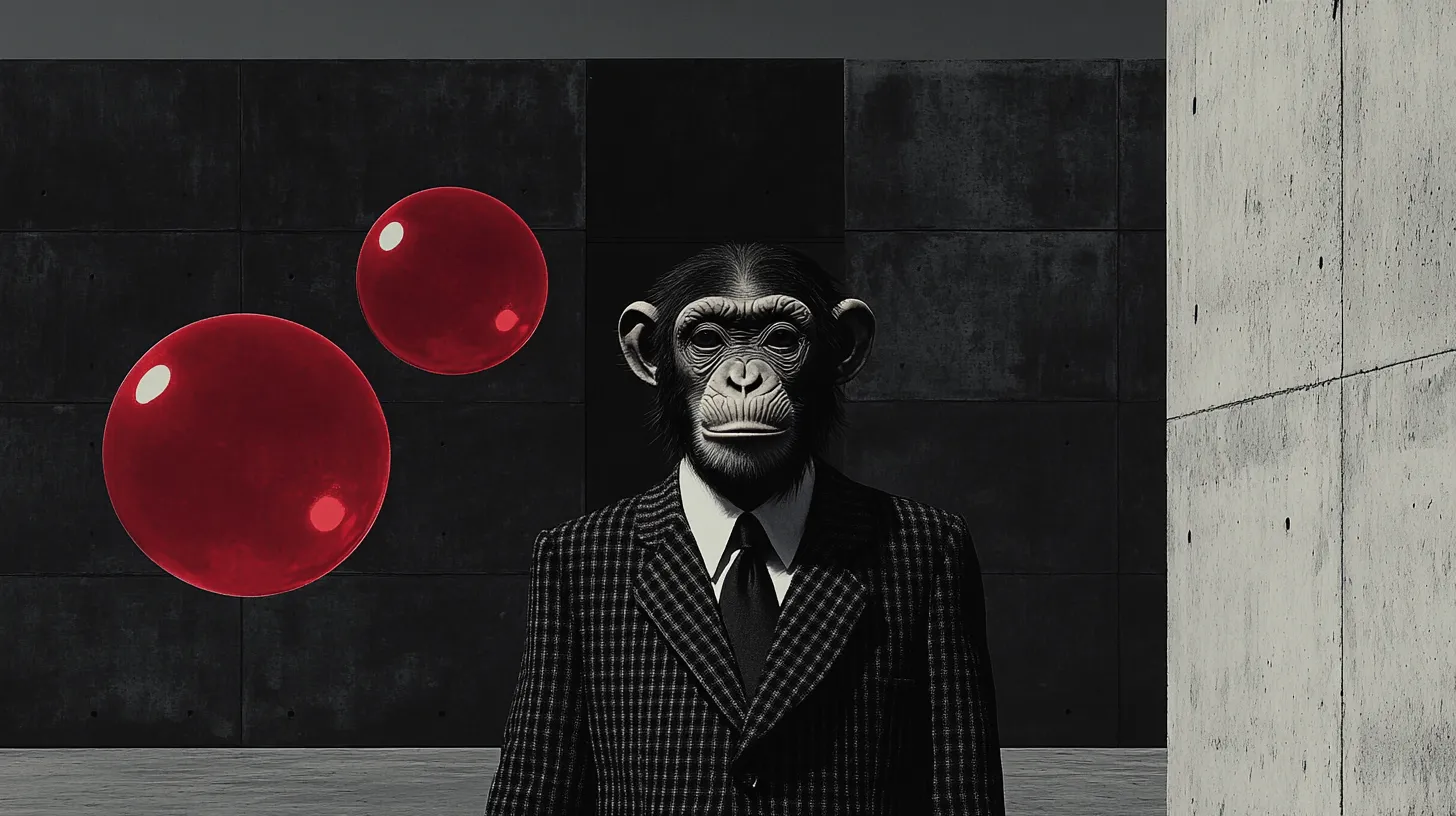%20copy.webp)
© History Oasis / Created via Midjourney
We’ve put together a list of famous chimps in history from space pioneers to Michael Jackson sidekicks.

Between 1965-2007, Washoe mastered over 250 ASL signs and taught them to her adopted son, Loulis.
When researcher Deborah Fouts returned from a miscarriage, Washoe—who had lost her own babies—independently signed "CRY," demonstrating empathy.

The first chimp astronaut Ham (1956-1983) endured NASA's 16.5-minute Mercury-Redstone mission in 1961, performing vital tasks while experiencing 17Gs of force during reentry.
Originally named "Chop Chop Chang," he executed lever-pulling exercises in space that directly informed Alan Shepard's historic flight three months later.
Ham retired at the National Zoo where he learned to paint in watercolor.

NASA's Enos completed two Earth orbits aboard Mercury-Atlas 5 in November 1961, persevering through 183 electric shocks. Something that would have demoralized most human subjects.
Despite perfectly performing complex tasks in zero gravity, Enos died from treatment-resistant dysentery just 11 months after his mission.

From 1985-2005, Bubbles lived as Michael Jackson's constant companion, sleeping in a crib in his bedroom and sharing meals at the dining table while dressed in matching outfits.
After growing to 180 pounds and displaying increasing aggression, he was transferred to the Center for Great Apes.
Caretakers have reported he still occasionally moonwalks when excited.

Abstract expressionist Congo the chimp (1954-1964) created over 400 paintings that impressed Salvador Dalí and Pablo Picasso.
One collector traded his entire portfolio of Renoir and Warhol works for a single Congo original.
During his brief artistic career, Congo refused to paint on red paper and would throw tantrums if a finished composition was altered.

During Columbia University's controversial 1970s language experiments, Nim Chimpsky acquired 128 ASL signs but primarily strung together demands like "GIVE ORANGE ME GIVE EAT ORANGE ME EAT ORANGE."
Raised in a brownstone by a human family who dressed him in clothes and taught him to use the toilet, Nim later struggled with reintegration with other chimps.

Between 1957-2012, Oliver sparked "humanzee" rumors due to his exclusively bipedal walking and unusually flat face, appearing on "The Ed Sullivan Show" and commanding $10,000 appearance fees.
Later, DNA tests confirmed he was 100% chimpanzee.
Despite his fame, Oliver preferred human company to other chimps, enjoyed watching television with a beer, and knew how to mix dry martinis.

Television pioneer J. Fred Muggs rescued NBC's struggling "Today Show" in the 1950s, boosting ratings by 42% while earning $1,000 weekly ($11,000 in today's dollars).
Insiders revealed that host Dave Garroway secretly despised the chimp and reportedly spiked his orange juice with Benadryl to reduce on-air antics.
Muggs celebrated his 60th birthday in 2012.

During the 1930s, Jiggs performed death-defying stunts as Tarzan's sidekick "Cheeta," including swimming through crocodile-infested waters and handling poisonous snakes.
After his death, Hollywood perpetuated numerous fraudulent "original Cheetas" including one chimp falsely promoted as 80 years old.
His autobiography, "Me Cheeta,” was published to critical acclaim despite being entirely fictional.

Since 1976, cognitive research chimp Ai at Kyoto University has mastered complex symbolic systems that enable her to communicate desires, identify colors, and count objects with remarkable precision.
Now in her mid-40s, she participates in brain imaging studies while her offspring undergo identical protocols. It’s the world's only multi-generational study of inherited versus acquired primate intelligence.

In early 2000s experiments that stunned the scientific community, memory prodigy Ayumu consistently outperformed university students by memorizing number sequences flashed for just 210 milliseconds.
Researchers have failed to find human subjects who can match his performance even after thousands of practice trials.

Commercial actor Travis (1995-2009) transitioned from Old Navy and Coca-Cola advertisements to national infamy after his savage 2009 attack on his owner's friend, who lost her face, hands, and vision.
Before the incident, Travis could use a computer, drive a car (albeit poorly), and enjoyed ice cream and wine while watching baseball.
Wikipedia - List of individual apes